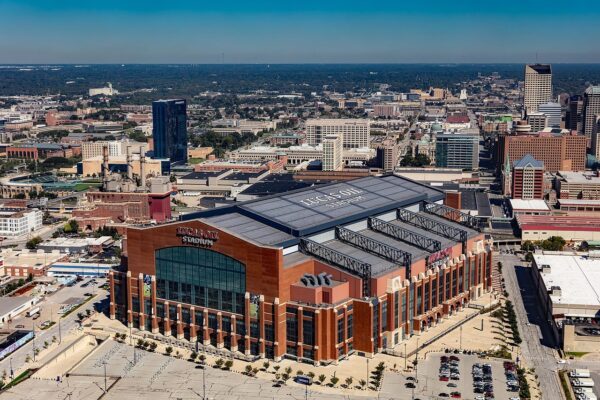Introduction to the 2025 NBA Free Agency Winners and Losers
The 2025 NBA free agency period has already shaped the league landscape dramatically, with clear winners and losers emerging early in the offseason. Houston Rockets stand out as the biggest winners so far, thanks largely to their blockbuster trade for Kevin Durant and smart roster moves that reinforce depth and versatility. Conversely, the Los Angeles Lakers appear to be struggling, caught short at the center position and unable to fully capitalize on their high-profile acquisition, Luka Doncic. This blog post tracks the evolving journeys of these teams and players through the lens of team dynamics, highlighting the pros and cons of individual star power versus collective depth.
Houston Rockets The Rise of a Deep Versatile Team
The Rockets’ offseason narrative began with the surprising but masterful acquisition of Kevin Durant, a player known for being one of the most efficient perimeter scorers in NBA history. This move alone positioned Houston as a clear contender, but they didn’t stop there. Houston also signed Dorian Finney-Smith to a four-year, $53 million deal and Clint Capela to a three-year, $21.5 million contract, along with securing Fred VanVleet and extending Jabari Smith Jr. The result is a team boasting both youth and experience, capable of adapting to different styles of play with strong defense, rebounding, and shooting. One notable strength is the Rockets’ balance between star talent and role players. Durant’s scoring genius is complemented by Finney-Smith’s defensive versatility, Capela’s rebounding, and VanVleet’s veteran leadership. However, the team does face risks, such as overdependence on VanVleet, who is past his prime, and potential minutes conflicts in the frontcourt with multiple big men. Still, with a roster deep enough to challenge Oklahoma City Thunder, Houston’s offseason moves demonstrate how combining individual brilliance with a strong supporting cast can push a team to championship contention.
Los Angeles Lakers Struggles to Fill Key Gaps
The Lakers’ offseason story is marked by missed opportunities and roster imbalances. After acquiring Luka Doncic in a blockbuster trade, the Lakers needed a reliable center to complement his dynamic pick-and – roll game. Unfortunately, their planned deal for Mark Williams fell through due to a failed physical, leaving them with limited options. Jaxson Hayes, who started four playoff games, failed to earn the coach’s full trust, and the Lakers pivoted to a small-ball lineup. Their fallback was signing Deandre Ayton, a two-year deal with a player option that offers little certainty. Despite Ayton’s solid box score numbers, advanced stats rate him as below average, and his skill set doesn’t align ideally with the Lakers’ championship aspirations or long-term fit next to Doncic. The Lakers’ current roster is frontloaded with power forwards but lacks a trustworthy center, creating a vulnerability that could undermine efforts to retain star players like LeBron James and convince Doncic to commit long-term.
The Leaguewide Trend Big Men Make a Strong Comeback
One of the defining themes of the 2025 offseason is the renewed emphasis on big men. Teams across the league are doubling down on size, signing or retaining centers and power forwards even when they appear set at those positions. For example, the Rockets added Clint Capela despite already having Alperen Sengun and Steven Adams. The Denver Nuggets traded for Jonas Valanciunas to back up Nikola Jokic, while the San Antonio Spurs signed Luke Kornet to pair with Victor Wembanyama. The Milwaukee Bucks extended Bobby Portis and signed Myles Turner, committing over $334 million to their frontcourt. This trend points to a strategic shift after a decade of small-ball dominance. Teams are investing heavily in big men, not just MVP-caliber players like Jokic or Joel Embiid, but versatile bigs who can defend, rebound, and space the floor. For instance, Valanciunas averaged 20 points and 15 rebounds per 36 minutes last season, showing the impact a skilled backup big can have. This move towards double-big lineups could create intriguing tactical battles, especially against teams like the Lakers and Golden State Warriors that still favor smaller lineups.
Denver Nuggets Strategic Core Refresh
Denver’s offseason journey reflects a careful recalibration of their championship-caliber roster. Despite a highly efficient starting lineup with a plus-10.6 net rating in the regular season, the Nuggets traded Michael Porter Jr. and a 2032 first-round pick for Cam Johnson, a 39% career three-point shooter whose style better fits Denver’s offensive system. This swap saved roughly $17 million in salary, allowing Denver to add Bruce Brown Jr., Jonas Valanciunas, and Tim Hardaway Jr. to bolster depth and shooting. These additions strengthen the Nuggets’ bench and improve their defensive and offensive versatility. Valanciunas, in particular, addresses the need for a reliable big man backup, reducing the risk of defensive lapses when Jokic rests. By replacing two rotation players with four capable contributors, Denver has improved their depth chart and positioned themselves as strong contenders to challenge the Thunder’s dominance in the West.
Milwaukee Bucks Facing Long Term Challenges
The Bucks’ offseason has been marked by difficult decisions and long-term financial constraints. Their bold attempt to build around Giannis Antetokounmpo hit a snag after the Achilles injury to Damian Lillard. Stretching Lillard’s $113 million remaining contract over five years creates a $22.5 million cap hit annually, limiting flexibility. While they managed to acquire Myles Turner as a younger rim protector, the team still lacks perimeter depth and a stable point guard solution. Milwaukee’s current roster construction, featuring Kevin Porter Jr. at point guard and a porous perimeter defense, casts doubt on their ability to contend for a title in 2025-26. Despite a history of aggressive moves that led to a championship, the Bucks now face the reality that boldness must be matched by high-quality talent to succeed. With limited assets and a complicated salary cap situation, the Bucks’ journey this offseason is a cautionary tale about the risks of long-term commitments without sufficient roster balance.
Conclusion Individual Stars Versus Team Depth in NBA Championship Journeys
The 2025 NBA offseason illustrates the contrasting dynamics between relying on individual stars and building deep, versatile rosters. The Rockets exemplify the benefits of blending superstar talent like Kevin Durant with complementary players who provide defense, rebounding, and experience. Meanwhile, the Lakers’ struggles show how missing a critical piece, such as a reliable center, can derail even the most promising star acquisitions. Simultaneously, the leaguewide emphasis on big men signals a strategic shift toward physicality and size, affecting team construction and playoff matchups. Teams like Denver demonstrate how refreshing a core with multiple rotation players can maintain championship relevance, while Milwaukee’s financial challenges highlight the risks of roster imbalance. Ultimately, championship journeys in the NBA require a delicate balance between individual brilliance and team depth, a lesson underscored by the unfolding stories of these offseason winners and losers.




